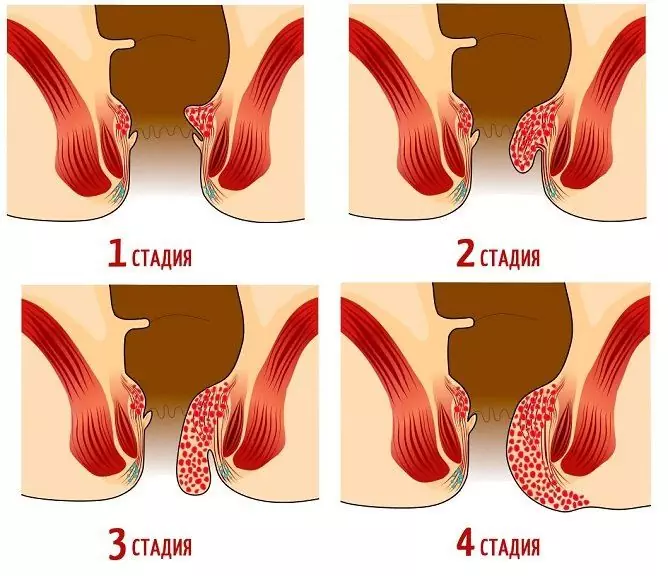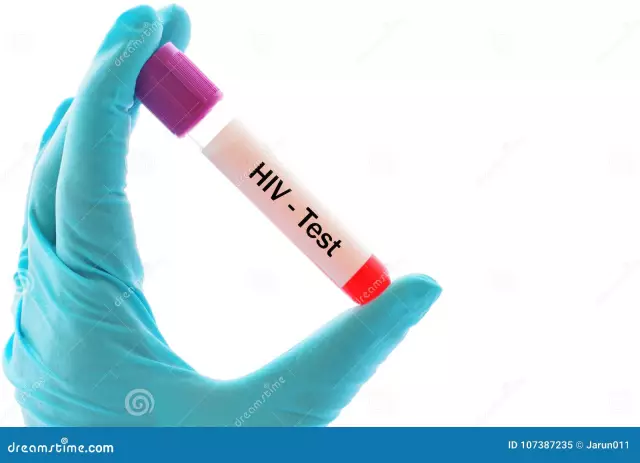- Author Rachel Wainwright [email protected].
- Public 2023-12-15 07:39.
- Last modified 2025-11-02 20:14.
Linked immunosorbent assay

An enzyme-linked immunosorbent assay is performed when difficulties arise with the diagnosis, if the patient has a hereditary predisposition to certain diseases, in order to assess the effectiveness of treatment. The analysis reveals antigens characteristic of certain pathogens and antibodies to them. The enzyme-linked immunosorbent assay is based on the reaction of interaction of an antigen with a specific antibody, as a result of which a complex is formed, which contains a special label that changes the color of the sample under the action of the reagent. The intensity of the staining makes it possible to judge the presence of antibodies or antigens characteristic of a particular infection, and already with the help of the equipment, their quantity is determined.
Antigens are foreign substances that cause an immune defense reaction in the body - specific proteins (immunoglobulins) are produced. Each pathogen has its own set of antigens, and the immune response to them is also specific. The main material for analysis is blood from a vein.
An enzyme-linked immunosorbent assay makes it possible to identify with high accuracy latent diseases at an early stage, inform the doctor about the patient's general condition and the risks of developing pathologies, about the state of reproductive health. An analysis is carried out to diagnose viral diseases: herpes, hepatitis, cytomegalovirus, Epstein-Barr virus, etc., sexually transmitted infections: gonorrhea, ureaplasma, chlamydosis, mycoplasma, Trichomonas, syphilis, to determine hormonal levels, diagnose cancer and immunodeficiency, detection and treatment of allergies.
For the analysis, in addition to blood, you can also take cerebrospinal fluid, amniotic fluid, and the contents of the vitreous body.
The analysis assumes the use of a group of ELI tests:
- ELI-B test, which allows to make a conclusion about the state of the immune system;
- ELI-Dia-test, which determines the state of the endocrine system. With its help, diabetes of the first and second types is diagnosed;
- ELI-N-Complex-12, which informs about the state of the peripheral and central nervous systems;
- ELI-Ankor-test-12, an analysis that assesses the state of the heart and blood vessels, assesses the risk of developing a stroke, heart attack;
- ELI-Viscero-16 is done to assess the general condition of the patient. This test provides diagnostics for 16 indicators: intestines, nervous system, myocardium, kidneys, immune system, liver, stomach, etc.;
- ELI-P-complex-12 is made to assess the reproductive capacity of the body;
- ELI-GIT-12 - an analysis that assesses the state of the gastrointestinal tract and makes it possible to foresee the risk of developing pathologies;
- ELI-HCG-APS test, reveals reproductive health disorders.
Enzyme immunoassay method
In medical practice, three methods of enzyme immunoassay are most often used: indirect, direct and sandwich-type.

An indirect method of analysis consists in the fact that at its first stage, an antigen is sorbed on a polystyrene plate, to which a sample with antibodies specific for it is added. The complexes formed as a result of the reaction are analyzed using anti-species antibodies containing a special label.
The direct method of enzyme-linked immunosorbent assay is based on the fact that labeled antibodies are immediately added to the sorbed antigen.
The sandwich assay is similar in principle to the indirect assay, but the plate absorbs antibodies rather than antigen.
Transcript of enzyme immunoassay
In cases where the infection is primary, antibodies are found in the blood - immunoglobulins of class M. The decoding of the enzyme-linked immunosorbent assay, which contains data on these antibodies, allows the attending physician to understand that treatment is necessary.
If an enzyme-linked immunosorbent assay of blood or other biological fluid detected immunoglobulin G, this means that a specific pathogen has already been in the body before, antibodies have already developed to it and treatment is not required. If the analysis showed the presence of antibodies of both class M and class G, then the chronic disease has passed into the acute stage and requires treatment.
In the decoding of the enzyme immunoassay, in addition to indicating the types of antibodies found, there is information about their quantity, therefore, for more detailed explanations and prescriptions, you must contact the specialist who issued the referral for the analysis.
Found a mistake in the text? Select it and press Ctrl + Enter.






